Main House
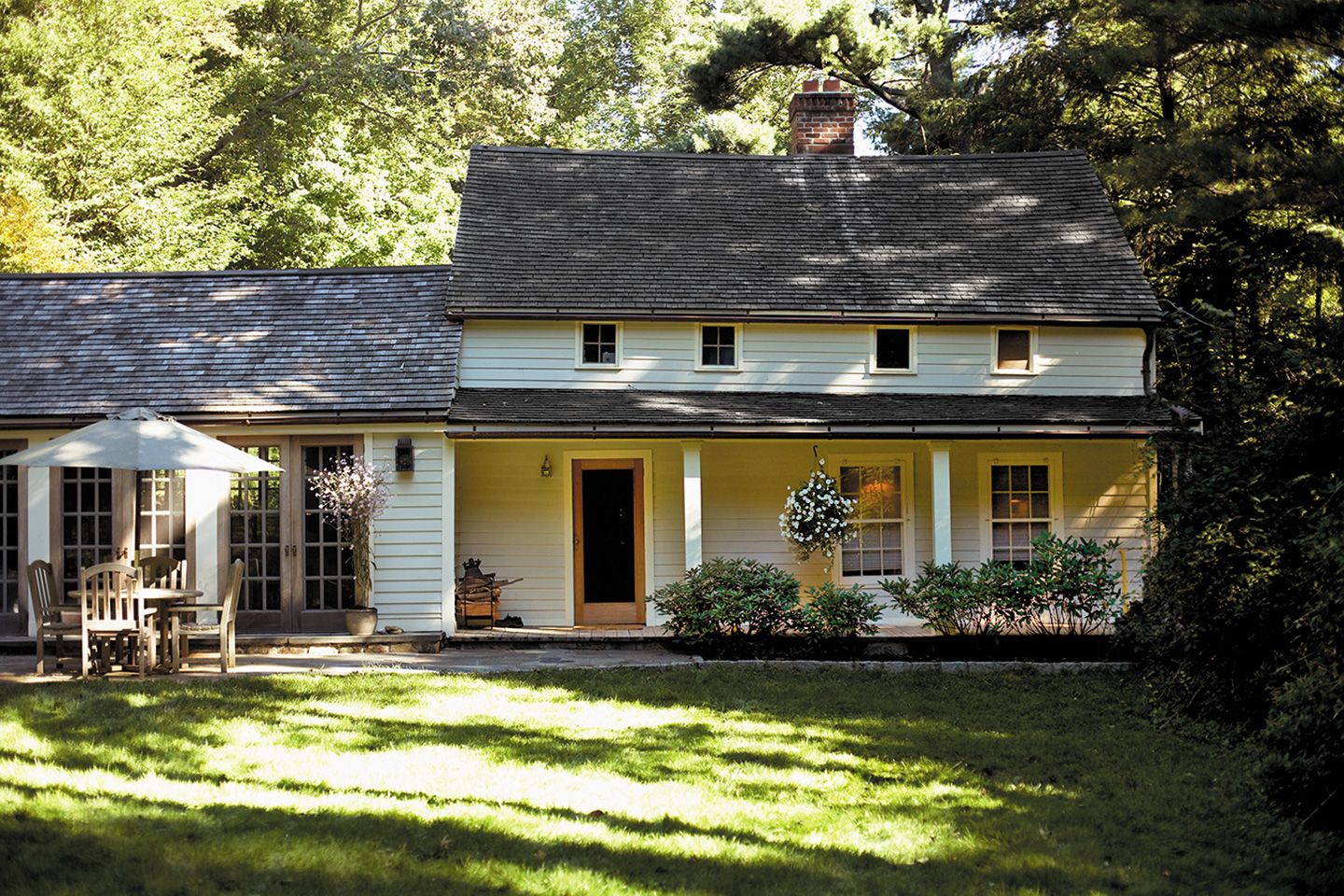
The old house wanted to fall down but Brooks Banker wouldn’t let it. “From the moment I saw this house, I knew it had to be mine,” he says of the simple clapboard cottage in Garrison, New York, some 60 miles north of Manhattan. And neither the squirrels running amok in the attic nor the powder post beetles making mulch of the centuries-old oak beams could convince him otherwise. Not even his mortgage lender’s dour estimate that the house had only 12 years more to live—and the justified alarm that the bleak diagnosis provoked in prospective insurers—could deter this house hunter from acquiring the Hudson Valley ruin he had fallen for at first sight.
It’s not like he doesn’t have anyplace else to live. He keeps a comfortable apartment in Manhattan, where his law practice binds him most working days. But the unassuming, wood-frame dwelling in rural Putnam County has become Brooks’s refuge. And he has no intention of ever giving it up—or giving up on it.
Shown here: Christopher Vazquez, a woodworker and carpenter who designs what he builds, milled salvaged lumber to restore the porch deck. The French doors were installed in the vaulted-ceilinged wing by a previous owner.
Family Room Details
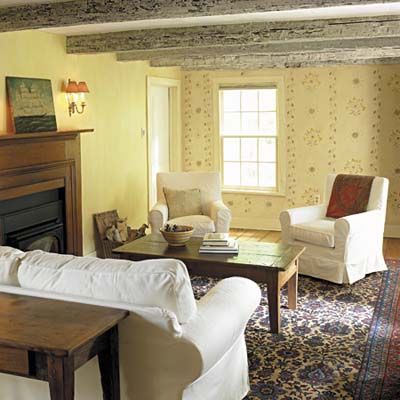
Built for newlyweds in 1785, the house was a post-Revolutionary War take on today’s starter home, a cozy place built by family and friends for a couple to begin life together and then, when fortunes allowed, expand or move on. “Move on” is, in essence, what the engineer who inspected the house prior to Brooks’s closing more than 200 years later advised him to do. “Of the thirty or forty 18th-century houses I looked at in my search, this one was authentic,” says Brooks, a collector of antiques with a passion for old houses. “And with it came the numerous problems inherent with authenticity.”
Its low ceiling, exposed oak beams, and wood-burning fireplace are the cozy hallmarks of the original 18th-century gathering room. The walls were skim-coated, then painted with brushes. The stenciling is old; the current homeowner had the pattern replicated on the opposite wall.
Artistic Accents
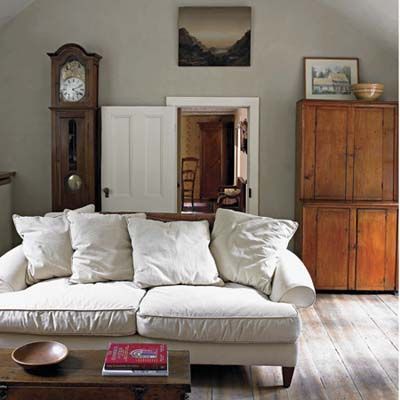
The large living area’s drywall shell was covered with pigmented plaster—a soft, warm, hand-applied finish. A watercolor displayed on top of the step-back cupboard shows the house as it looked when illustrator Charles Locke lived there from the 1940s until his death in 1983.
Salvaged Mantel
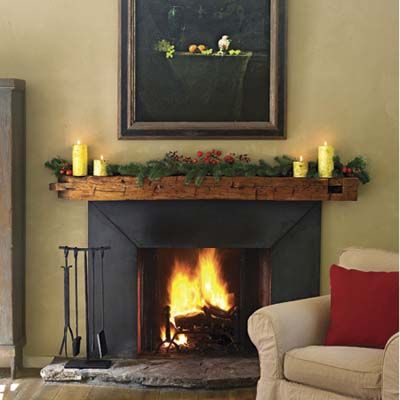
A salvaged fir beam now serves as a mantel above the soapstone-surrounded fireplace in the large living area—originally the home’s summer kitchen, later a painting studio. Today Brooks simply refers to the space as “the big living room,” in contrast with the smaller, original gathering room.
Walls With Character
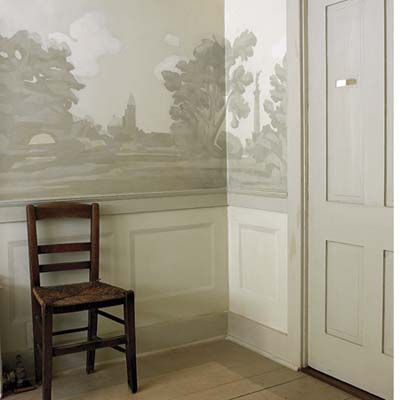
A peephole pierces the four-panel swinging door that leads from the kitchen to the dining room, where a moody landscape painted in the 1940s by Locke still decorates the walls. The trompe l’oeil paneling below the chair rail is new.
Making Room

Pigmented plaster was used to coat the dining room’s drywall ceiling, and the oak beams were exposed to allow the 6-foot-4 homeowner to stand upright. Pale-gray faux wainscoting and painted floors blend with the rest of the walls and trim, making the small room feel airier.
Powder Room
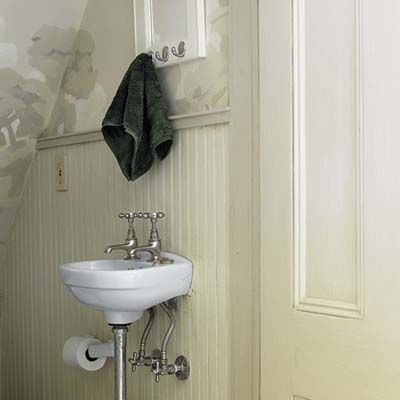
Beadboard wainscoting and an old-fashioned basin helped transform a small area under the staircase into a comfortable powder room off the dining room. New decorative painting continues the spirit of Locke’s mural, tying together the adjacent spaces.
Nooks and Crannies
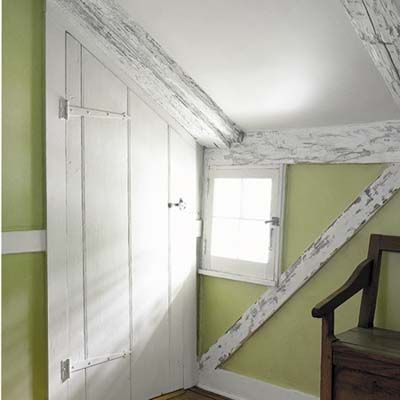
In the guest bedroom, an under-the-eaves closet and a narrow English chimney cupboard offer much-needed storage.
Desperately Seeking Storage

Since space is at a premium in the compact, 18th-century interior, the homeowner gravitates toward antique furnishings like the upstairs hall’s French chestnut flip-top bench, which functions as both seating and stowaway space. The drywall in the upstairs hall and two bedrooms was coated with pigmented plaster,
then glazed for a subtly textured, aged look.
Masterful Maintenance
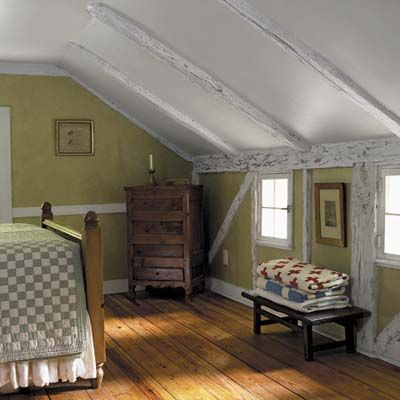
In the master bedroom, the wide-plank heart-pine floors were reconditioned. Throughout the upstairs, the exposed posts and beams were painted and glazed to brighten the interior.
Space to Work With
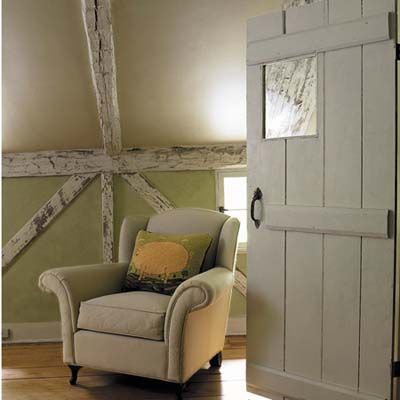
A windowed door leads to a walk-in closet turned home office in the master bedroom.
Luxurious Accents
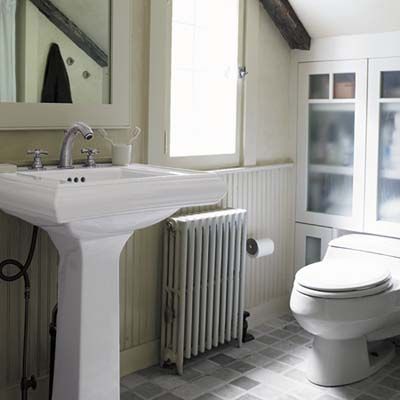
A clean-lined pedestal sink, custom cabinets, and tumbled-marble floor tiles over radiant heating bring modern-day luxury to the one full bath, while reclaimed beams visually connect it to the other rooms.
Pro Kitchen
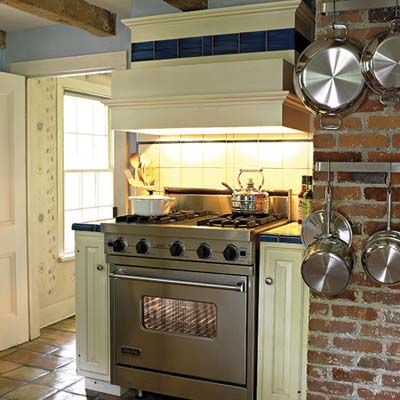
A four-burner pro range is at the heart of this small but efficient kitchen. Cookware hangs from stainless-steel bars mounted on the brick chimney wall. The next round of work will include replacing the kitchen’s 1980s-era pickled oak cabinets with simple cherry cupboards that Vasquez will build by hand.
The Homeowner

Brooks Banker has been restoring the 1785 structure for 9 years—and counting. The honeymoon phase of his homeownership may be long over, but he remains smitten. These days, with the benefit of hindsight, he is pleased to find the old house intact when he drives up from the city. “Oh, good,” he mumbles each week on arrival. “It’s still standing.”
Floor Plan
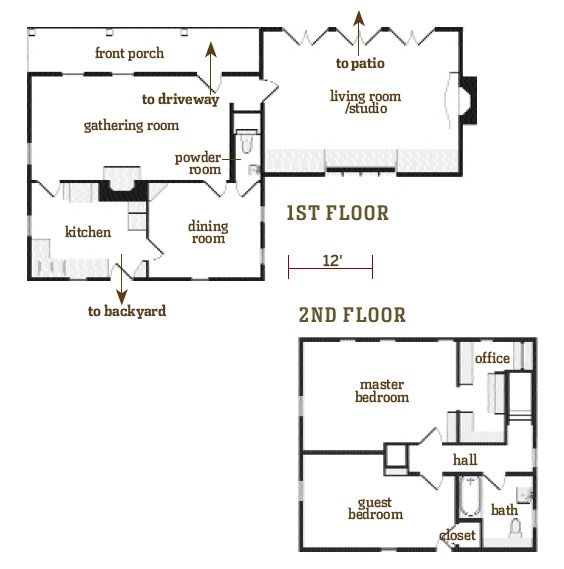
The house retains its 18th-century footprint, with the gathering room, dining room, kitchen, and now a powder room downstairs; upstairs are two bedrooms, one bath, and a walk-in closet turned office. The one-story wing built as a summer kitchen functions today as a large living area.
